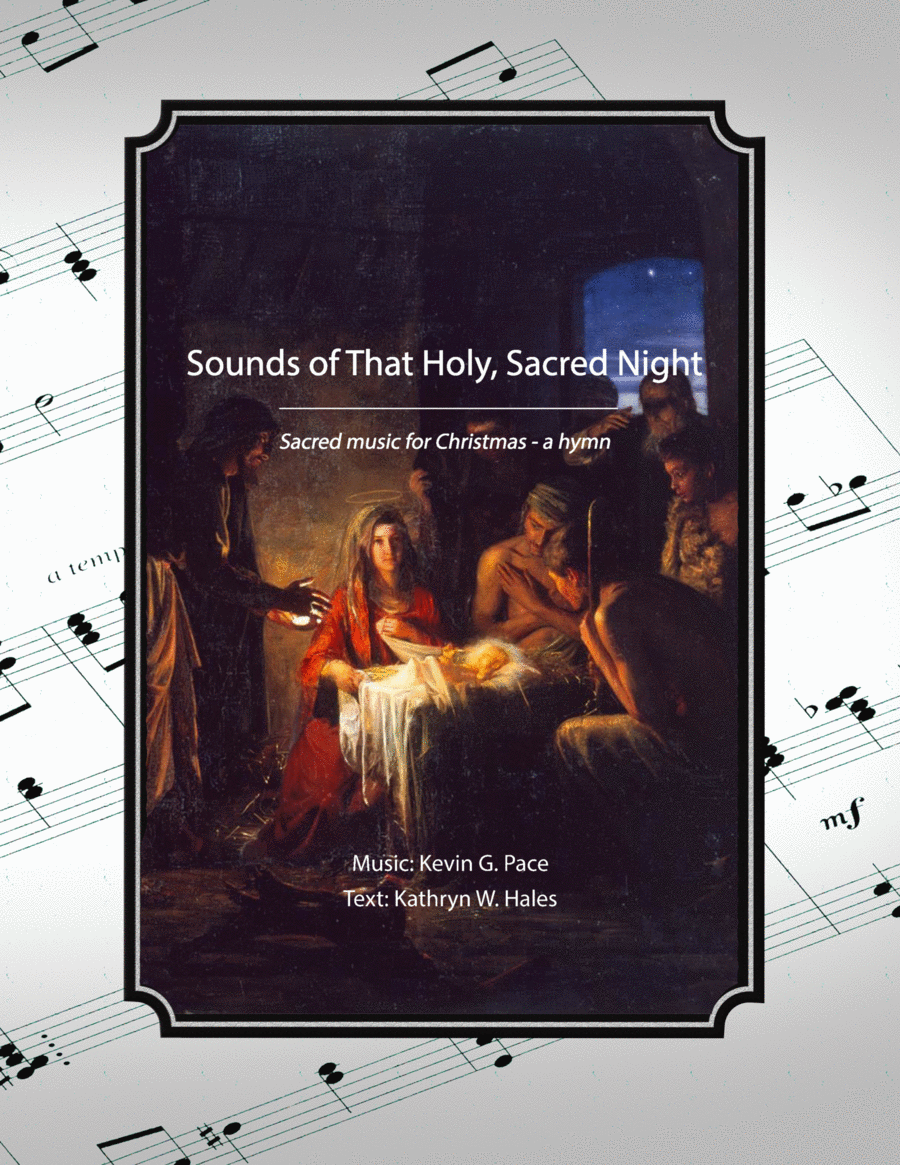Choral Choir,Choral,SATB Chorus - Level 4 - Digital Download SKU: A0.1429535 Composed by Kevin G. Pace (ASCAP), Kathryn W. Hales. Christian,Christmas,Praise & Worship,Religious,Sacred. 3 pages. Kevin G. Pace #1010232. Published by Kevin G. Pace (A0.1429535). A notable, sacred Christmas hymn with music by Kevin G. Pace and text by Kathryn W. Hales.Text:The sounds of that holy, sacred nightBegan with moans of pain,Mary cried out as all mothers do,From the straw where she had lain.She was young, but knew God’s will:Become the mother of His Son, He came to earth as all men do,Born to be The Anointed One. Another sound broke through the night,A whimper from a newborn babe,In Bethlehem so long ago,Where in a manger He was laid.He cried as all babies do,But cradled in His mother’s care,He left heaven’s glory to reside,In a world of dark despair. Songs rang out that joyous night,As angels came down to Judah’s hills,And choirs proclaimed the wondrous birth,And the heavens their voices filled.“Peace on earth, good will to men,”Were the glad tidings of great news.The Word of God manifest in flesh,Would proclaim His gospel’s truths. Then Mary’s song that holy night,Became a lullaby of joy,As she gazed with wondermentAt this child, her precious baby boy,Hers to hold but for a time,Soon His Father’s work to do,On earth becoming Savior Lord,To live and die for me and you. Chorus:Sounds of that sacred nightHeard by so very few,Now ring forth from land to land,Announcing again the joyous news.The sounds and songs that holy night,We celebrate at Christmas time,The song of love that Christ was born,Song of love, O Love Divine!
